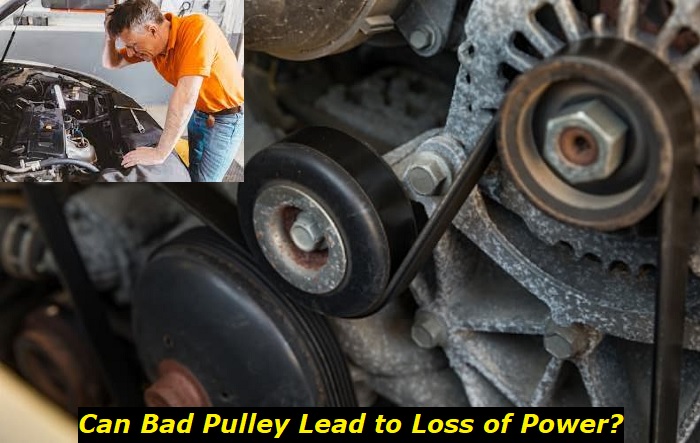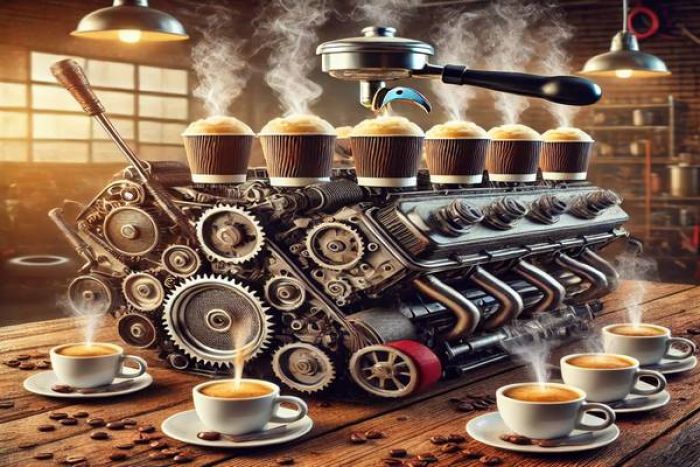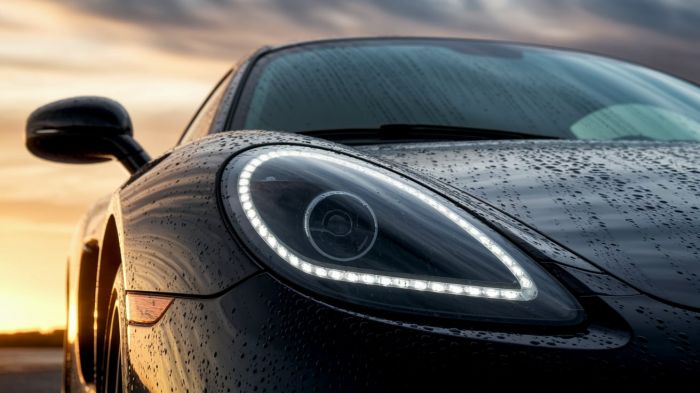A bad pulley can cause a loss of vehicular power when it fails. It can be any of the crankshaft, idler, or tensioner pulleys. We'll discuss more on this as the article progresses. Expect to read about other symptoms and their fixes well.
Engine power problems highlights
- Level of urgency:Medium
- DIY inspection:Possible but may be complicated
- DIY repair:Sometimes, possible
- Cost of repair:$200 - $650
- Can you drive?In most cases, yes
- Commonreasons:A largelist of reasons, including fuel and air supply, electronics, glitches, but not limited to those.
- Ways to fix:Use code scanner to locate the problem and solve it

What Are Car Pulleys and How Do They Work?
Pulley systems in cars can be confusing to vehicle users, especially the differentiation of pulley types. The confusing nature of online information sources on the subject isn't helping matters. That's why we deemed it necessary to treat car pulleys extensively in this guide before stating their symptoms.
1) Categories of Car Pulleys
There are two major categories of pulleys in your car. The first one covers those ones that supply power to accessories or devices. The second one entails those pulleys that spin freely but are still instrumental to various functions in an indirect way.
Crankshaft pulleys are directly driven by an engine rotation. And this pulley utilizes belts to drive the accessory pulleys such as idler pulleys and tensioner pulleys. Accessory pulleys can be found on parts such as air conditioners (ACs), alternators, power steering pumps, and compressors.
A crankshaft pulley drives nearly all the pulleys in a vehicle. It's usually pressed on or bolted to the crankshaft. So the crank will turn when the crankshaft spins as the engine runs. And this movement transfers to the other pulley types via the serpentine belts or v-belts.
Your car's camshaft will also possess a power takeoff in certain instances. A camshaft is generally linked to a crankshaft with the aid of belts or chains driven by sprockets. This means that the accessories run by cam pulleys are also indirectly driven by crankshafts.
2) Car Pulleys in General
Accessories or devices are powered by the most common vehicle pulleys. A device will be enabled when a drive belt turns an accessory pulley. For example, the pulley on a power steering pump helps in pressurizing and distributing fluid throughout the system.
Another example involves the one on the alternator. It helps in forming a magnetic field which can be transformed into useful electrical energy.
Nearly all of these pulleys enable the accessories that they're assigned to whenever the engine is in operation. Although there are special cases such as AC compressors that feature built-in clutch systems. Such clutch systems facilitate the free spinning of a pulley when the AC is switched off.
3) Idler Pulleys (Idlers) vs. Tensioner Pulleys (Tensioners)
Car pulleys that don't generate power are usually called idlers or tensioners. Let's look at their differences before explaining each pulley type in separate subheadings.
Idlers can be utilized in place of an accessory that's absent. One example is an AC compressor. Idler pulleys are typically featured in serpentine belt system designs to make up complex belt routes. These pulley types possess cylindrical workings and simple bearings, apart from turning freely.
On the other hand, tensioners have similar workings to idlers. But they take on the extra role of maintaining belt tightness. A loose belt won't let the accessory pulleys rotate well. So the tensioner pulley has to make use of screw systems and spring-loaded arms for the application of pressure.
The major physical dissimilarity between an idler and a tensioner is a simple bolt that can be adjusted. But in terms of their primary role, an idler guides belt drives, while a tensioner applies force to drive belts.
An engine chain or belt loops around or under the idler, thereby facilitating a constant loop that gives the belt free movement. The tensioner's tightening of the belt/chain will help it in transferring motion and power effectively. This is from the crankshaft to other connected parts.
- Idler Pulleys
Idler pulleys are bearings or wheels that guide chains or belts effectively around a defined route. They help in keeping the mechanism well-aligned for the prevention of chain/belt and system wear or tear.
- Tensioner Pulleys
Tensioner pulleys are another type of bearings or wheels and they apply force to chains or belts. This is to prevent the chains/belts from jumping or slipping off of other parts in the system and causing damage. A tensioner is positioned at one end of a belt and operates by passing force from a hydraulic spring or piston to the system.
Symptoms of Bad/Damaged Pulleys
The following signs of pulley faults cover those of crankshaft pulleys, idler pulleys, and tensioner pulleys.
1) Loss of Vehicular Power
A bad pulley can make the drive belts not secure enough, thereby restricting them from sending adequate power to their targets. There'll be an overall reduction in performance, especially during quick acceleration.
2) Strange Vehicle Noises
A specific weird sound might be pointing to a pulley system defect. For example; squealing (screeching), chirping (clicking), whining, rattling, grinding, etc. It might be any of the pulley types having a defect or being worn out. Check all pulleys to be sure.
3) Stalling of a Vehicle
A problem with the pulley system can make the engine stall. Although this isn't common. Your car will experience difficulty in moving the motor because the pulley isn't spinning the serpentine belt. You may feel abnormal engine vibrations before this happens.
4) Abnormal Engine Vibrations
Pulleys that possess bad integrated harmonic balancers will make your car's engine vibrate. This is because the balancer is supposed to absorb the crankshaft's vibrations which aren't meant to reach the engine's accessories when there's cushioning.
The vibrations will get more intense as the engine RPMs (revolutions per minute) get nearer to the resonant frequency. It can cause harm to the crankshaft, the engine's accessories, and other internal components.
5) Vehicle Not Starting
This is related to your car stalling. You may not be able to start your car if the crankshaft sensor is unable to detect the RPMs from the crankshaft pulley's teeth.
6) Rough Idling
A bad pulley can make a vehicle idle rough because of the stress of idling. It's most likely the culprit for a rough idle when you can't detect any combustion issues or observe misfires.
7) Overheating
The water pump can't work if the pulley won't spin the serpentine belt for whatever reason. Engine overheating will occur after because the water pump is needed to be operational to provide cooling for the engine.
8) Battery Light Illuminating
An alternator can stop spinning because of a critical pulley fault. A car's alternator is linked to the pulley system by a drive belt. So your battery won't be able to charge when the alternator can't spin, prompting the battery alert to illuminate.
9) Internal Engine or Transmission Damage or Issues
Driving with a bad pulley for a long duration can have adverse effects on other engine components and also the transmission. For example; damage to the crankshaft bearings, gears, shaft, drive belt edges, etc.
10) Stiff Power Steering Wheel
This can happen to a hydraulic power steering system that features a steering pump driven by a drive belt. Damage to the pulleys may cause the drive belt to cease turning and disable the steering pump. Drivers will steer with great difficulty due to this.
Other possible symptoms of pulley failure are listed below.
- Check engine light (CEL) illuminating on the dash
- AC compressor not active
- Burning smell
- Pulley discoloration
Fixing and Avoiding Pulley Faults
The best step to take when there's a bad pulley is to take the vehicle to an automotive repair workshop or the dealership to have it properly examined. This is because there might have been ripple effects of the above-mentioned symptoms. More faults or consequences of faults may be detected, apart from a bad pulley.
A pulley should be inspected by removing it before assessment. The mechanic will be able to see all the sides of the pulley and avoid a wrong diagnosis. Note that it's more cost-effective to swap out a worn or loose pulley than to leave it or put it back in place till it gets totally unusable.
It's advisable to perform routine replacements for the pulleys if your car is a high-mileage vehicle. Remember that nearly all engines possess one tensioner and idler each. But some units may feature more than one idler. There's typically one crankshaft pulley in every car.
Conclusion
It's always best to stop driving your car when you notice that it has a bad pulley. The vehicle should be towed to an auto repair shop without delay. Sometimes, a car could go for weeks or months even with a faulty pulley. And it could just take just a few days or even a matter of minutes for things to go really bad. For example; catastrophic engine failure.
About the authors
The CarAraC research team is composed of seasoned auto mechanics and automotive industry professionals, including individuals with advanced degrees and certifications in their field. Our team members boast prestigious credentials, reflecting their extensive knowledge and skills. These qualifications include: IMI: Institute of the Motor Industry, ASE-Certified Master Automobile Technicians; Coventry University, Graduate of MA in Automotive Journalism; Politecnico di Torino, Italy, MS Automotive Engineering; Ss. Cyril and Methodius University in Skopje, Mechanical University in Skopje; TOC Automotive College; DHA Suffa University, Department of Mechanical Engineering






Add comment